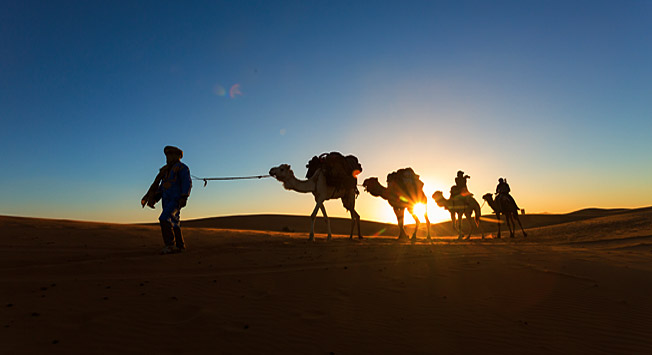
At one time, Astrakhan was an important city of the Golden Horde, the capital of the Astrakhan Khanate, the Russian outpost on the Caspian Sea. This is where the Volga flows into the Caspian Sea, forming numerous islands. That is why Astrakhan is often called the Venice of the South and that is why Astrakhan Region was on the Silk Road. The city is mentioned in written sources dating back to the 13th century as the autumn residence of the rulers of the Golden Horde, a great Tatar-Mongol empire, one of the world's most powerful medieval states.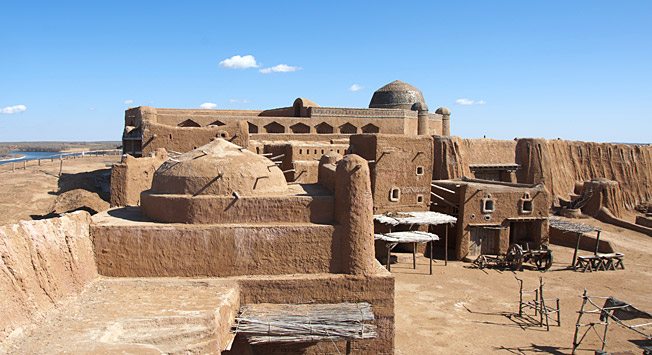
Photo credit: Shutterstock/Legion-Media
The city was a key point on trading routes linking China, Central Asia, Europe, and the Mediterranean. Silk Road caravans passed through it. In 1556, Russian tsar Ivan the Terrible captured the Astrakhan Khanate. Astrakhan became Russia's trading gate to Asia. There were numerous fairs held in the city and it was home to people of over 200 nationalities. That is why there are so many churches and mosques in Astrakhan, while the village of Liman in Astrakhan Region even has a working Buddhist temple.
Astrakhan's historical center grew around the Kremlin, whose foundations were laid back in the times of Ivan the Terrible. These days, the Kremlin houses an ethnographic museum devoted to the culture and everyday life of the peoples of Astrakhan Region, as well numerous exhibitions in its Artillery Tower, Red Gate Tower, and Torture Tower. The Astrakhan Kremlin is a UNESCO world heritage site.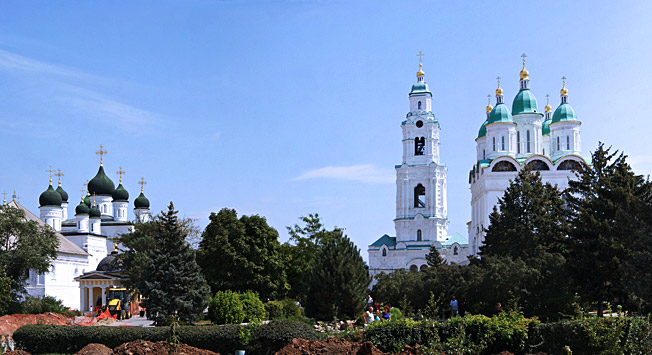
Photo credit: Lori/Legion-Media
The city's Dogatin Art Gallery boasts an impressive collection of 19th and early 20th century Russian art, featuring works by Arkhip Kuindzhi, Isaac Levitan, Ivan Shishkin, Kazimir Malevich, and Vasily Kandinsky. 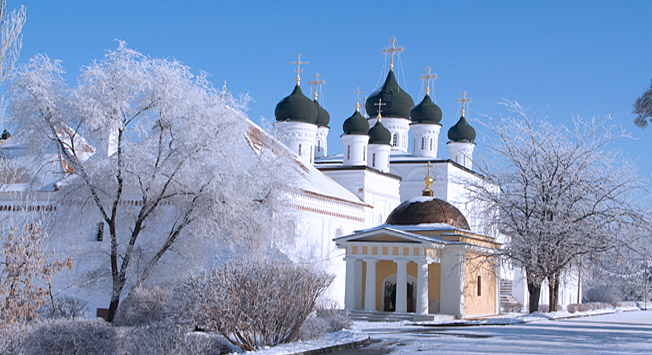
Photo credit: Lori/Legion-Media
For Russians, sand and sand dunes are traditionally associated with far-away countries. Yet, there are deserts in Russia too. For centuries, Silk Road caravans passed through the Astrakhan sands. There are travelers' accounts of gigantic areas in Astrakhan Region covered with sand from as late as the start of the last century. Now, these areas are getting increasingly overgrown with grass but tourists still have an opportunity to see a real desert, on the Russian border with Kazakhstan.
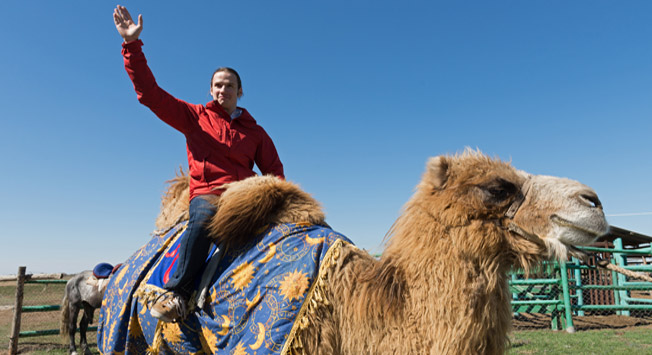
Photo credit: TASS/Maxim Korotchenko
Back in Soviet times, there was a joke claiming that "Russia is the motherland of elephants". Leaving elephants aside, if you substitute them for camels, there is some truth in the saying. Indeed, can there be a desert without camels? Two-humped camels race in an annual event at a hippodrome in the village of Tri Potoka in Astrakhan Region's Privolzhsky District. This in an ancient sport, which is very popular in Arab countries. In Russia, these races are held only in Astrakhan. There are farms in Astrakhan Region that breed two-humped Bactrian camels.
This network of caravan routes linking China to Europe lasted for over 1,000 years, from the 2nd century B.C. up to the 15th century. One of those routes ran through Astrakhan Region. The regional culture ministry has united different sites along the road into a new tourist route. The Astrakhan section of the Silk Road forms part of an international tourist project and could become a popular tourist route, like the famous Golden Ring. Some of the region's heritage sites were key points on the Silk Road, like Lake Baskunchak, whose salt was transported along the Silk Road starting from the 8th century, or the excavation site of Sarai Batu, the Golden Horde capital, located near the modern village of Selitrennoye.
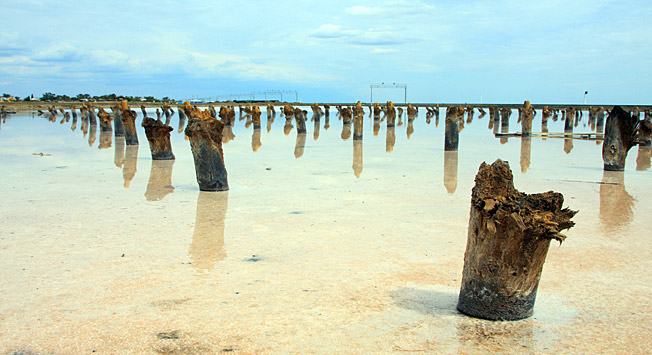
Photo credit: TASS/Sergei Chernov
Astrakhan Region has an amazing salt lake, known for its healing properties. It is located at the top of a salt mountain. In summer, people flock there: Some to test the medicinal qualities of its muds, others just to try what "walking on water" feels like. The concentration of salt in the water is so high that people can just float on the surface, without spending any effort as the water is pushing them out. One can just float on the surface of the lake, reading a paper or a book. However, care should be taken if you have any scratches or broken skin, as the salt can make then very painful. In some parts of the lake, the density of salt is so high that it is possible to literally walk on its surface.
The origins of the name of the lake are still a mystery. According to one theory, Baskunchak means a dog's head, from the Turkic words bash for head, and kuncha for dog. There is a local legend that once, many years ago, there was a long period of drought. One man, traveling on a horse with a dog, wanted to make a shortcut and decided to ride across the lake. The horse, which had horseshoes on, managed to cross the salty bottom, but the dog cut its feet and remained at the middle of the lake, having turned into a pillar of salt.
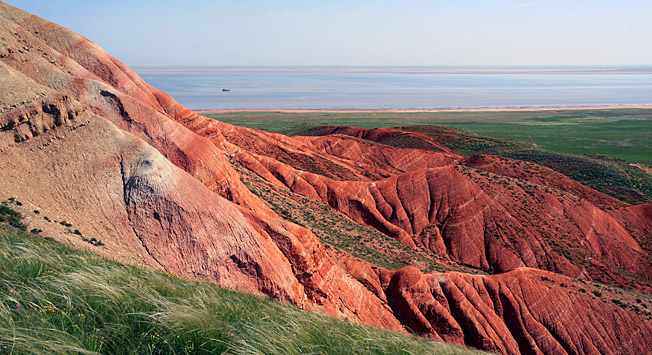
Photo credit: TASS/Maxim Korotchenko
Near the lake, there is a mountain called Bolshoe Bogdo. According to one legend, this mountain used to be in the Urals but two holy Buddhist monks decided to carry it on their shoulders to the banks of the river Volga. They prepared for their feat with a long period of prayer and fasting, then finally put the mountain on their shoulders and set off on their journey. Just as they were approaching their final destination, they met a very beautiful Kalmyk girl. She was so beautiful that a sinful thought crossed one of the monk's mind. That was enough for the mountain to come crushing on him, with his blood covering one of its slopes. Since then, Bolshoe Bogdo remains here, just 50 kilometers from the Volga. Red flowers growing on its slopes symbolize blood.
Inside the mountain, there are salt deposits that were formed over 200 million years ago. Since they are lighter than the rocks above them, they keep rising and the mountain keeps growing. Winds blowing from the steppes create numerous holes in the surface of the mountain. The wind is playing the mountain like a musical instrument, creating the sound effect of a whisper. Buddhists believe it is the monk praying. For Kalmyks, Bolshow Bogdo is a holy site. They believe that the mountain was blessed by the Dalai Lama and come on pilgrimages here.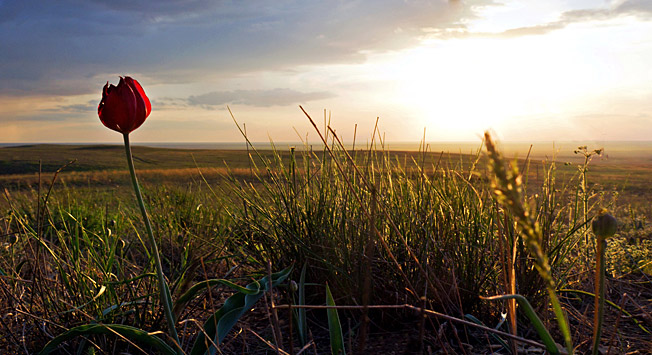
Photo credit: TASS/Maxim Korotchenko
The mountain is a popular destinations for tourists too, who come here to pick flowers: In April, wild tulips are in bloom here and the slopes of the mountain become red with flowers. Tourists are also fascinated by eagles' nests on the sides of the mountain. There are over 30 caves in the mountain. The longest one of them is 1.5 kilometers deep. There is a unique environment around the mountain, with 215 bird species living in the area, including some rare ones. Nineteen of them are on the Red List of threatened species.
Astrakhan can be reached by train or plane (starting at about $155), car (about $45 per 600 miles), or cruise ship. Traveling by foot across the steppe is not a simple task: like millennia ago, you will need a horse and, in this case, a rugged, off-road iron one. Major cities have auto rental agencies. Joining guided tour groups is also an option.
All-inclusive tours through the south of Russia (like this one) neglect the steppes of Astrakhan more often than not. Still, you can book a special tour of the steppes (SagaTours agency, for example, has experience organizing such tours for foreigners, and prices for visiting the steppes, including such draws as staying in a nomad’s yurt, start at only $400).
All rights reserved by Rossiyskaya Gazeta.
Subscribe
to our newsletter!
Get the week's best stories straight to your inbox